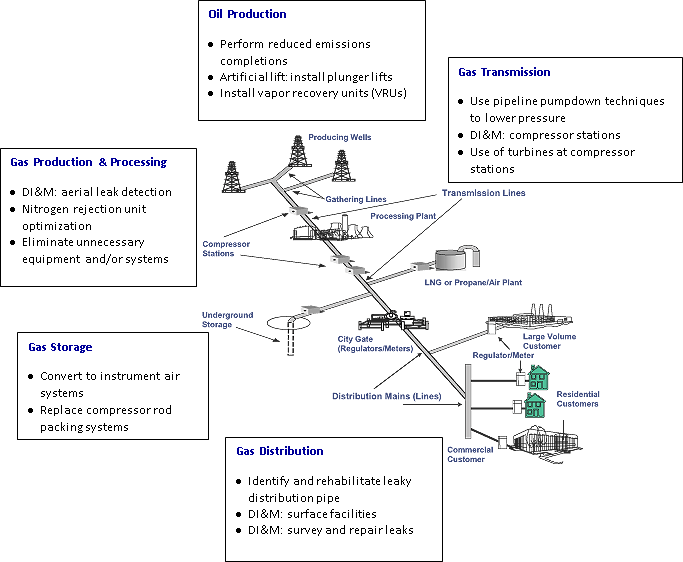On Friday, the Obama Administration released a multi-sector strategy to cut methane emissions from agriculture, landfills, coal mines, and oil and gas production. This is an important step to reduce the climate risks of natural gas — as long as we get the details right — and to create a more level playing field for cleaner, less risky options like renewable energy and energy efficiency.
As I have discussed in previous blogs, the president originally announced this strategy as part of his Climate Action Plan last June.
Why is this important?
Consider these facts:
- Methane emissions were responsible for 9 percent of total U.S. global warming emissions in 2012, making them the second largest source after carbon dioxide (CO2), according to the EPA.
- Methane is a potent greenhouse gas that traps 34 times more heat than CO2 over a 100-year period, and 86 times more over 20 years, according to the latest science from the IPCC.
- The natural gas industry is the largest industrial source of methane emissions at 23 percent of the total, and emissions are projected to increase as a result of the hydraulic fracturing boom.
- The Obama Administration estimates that the plan could reduce global warming emissions by up to 90 million metric tons, contributing to the president’s goal of reducing total U.S. emissions 17 percent below 2005 levels by 2020.
The emission reductions are likely much greater than this. The EPA is underestimating U.S. methane emissions by more than 60 percent because they are using an outdated 100-year global warming potential (GWP) for methane of 21, which should be updated to the latest IPCC estimate of 34.
In addition, a recent study published in the journal Science found that the EPA may be underestimating methane leakage rates from oil and natural gas production and distribution by 25 to 75 percent.
How would the plan reduce methane emissions from the oil and gas industry?
The plan proposes the following three key actions:
- Solicit expert input on a series of EPA technical white papers assessing the best approaches for reducing methane and other emissions, and use this research to develop and implement new regulations (where appropriate) by the end of 2016.
- Update standards to reduce venting and flaring from oil and gas production on public lands.
- Identify downstream methane reduction opportunities as part of the Quadrennial Energy Review, DOE roundtables, and EPA’s voluntary Natural Gas STAR program.
Recent studies by EDF, WRI, and NRDC show that several cost-effective technologies are available today to reduce methane leaks from natural gas production and distribution by 40 to 80 percent.

A 40% reduction in onshore methane emissions is achievable with existing technologies at a net cost of $0.66/Mcf of methane reduced, or less than $0.01/Mcf of gas produced, including savings to companies for selling the recovered gas. Source: EDF 2014.
Is the plan enough?
The president’s plan is an important step for reducing the climate risks of natural gas. However, the devil is in the details. Given past experience, it’s clear that voluntary actions by industry will not be enough. Strong state and federal regulations will be needed to achieve these reductions and address other important environmental, public health, and safety risks from natural gas production and distribution.
And even if we could completely eliminate methane leaks from natural gas, a recent UCS study showed that a transition from a coal- to a natural gas-dominated electricity system would not be sufficient to meet U.S. climate goals.
The recent spikes in natural gas and electricity prices in several parts of the country due to the cold weather and high natural gas demand for electricity and home heating shows that an over-reliance on gas also has important economic risks.
Stronger climate and clean energy policies are needed to reduce these risks and diversify the electricity mix with renewable energy and energy efficiency.
The way forward
All this means that moving forward on the president’s plan makes a lot of sense — and that we have to do it right. The good news is that we know how to do it cost-effectively; we just need the leadership and the will. And continued attention to what science is telling us.


